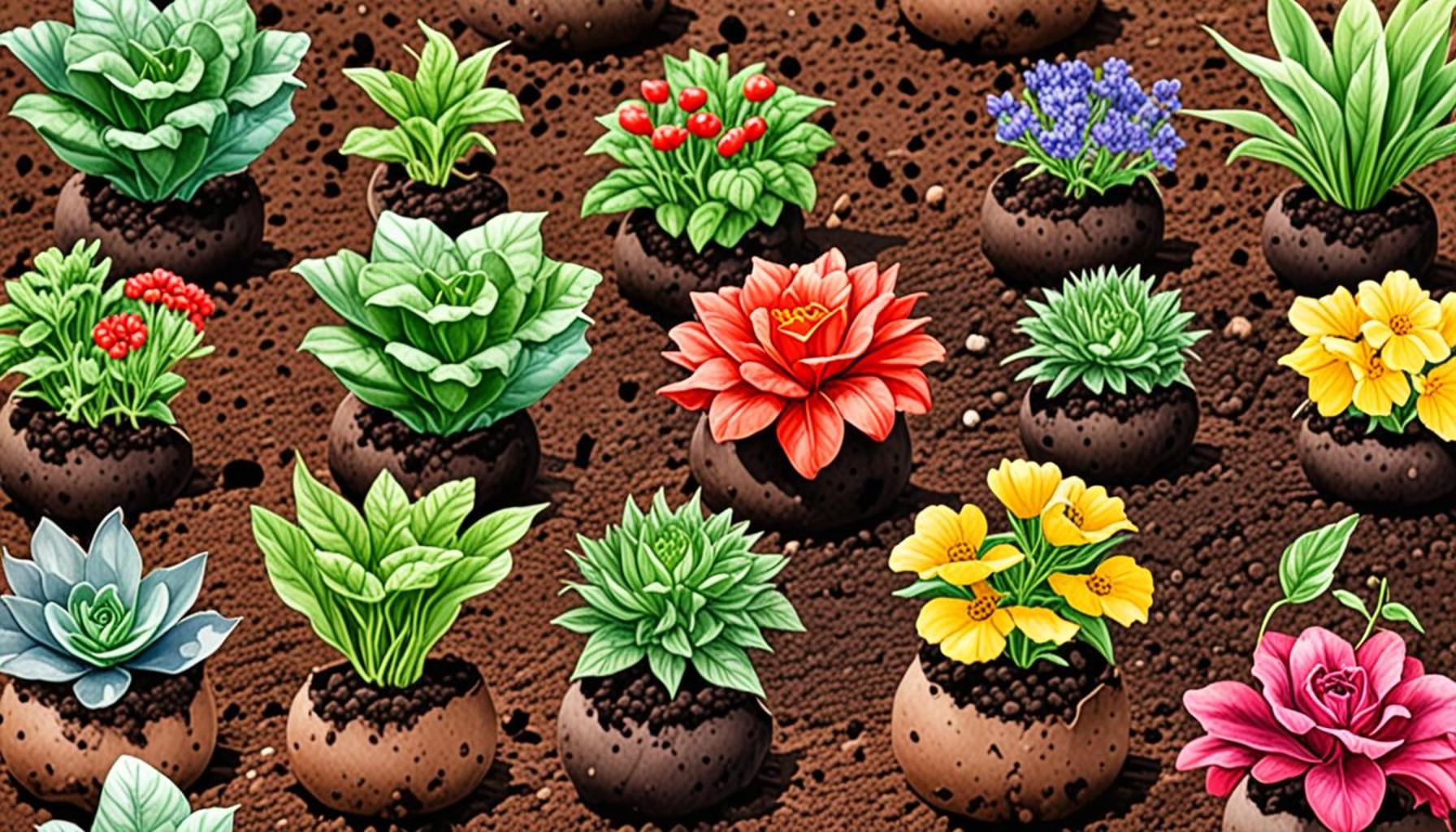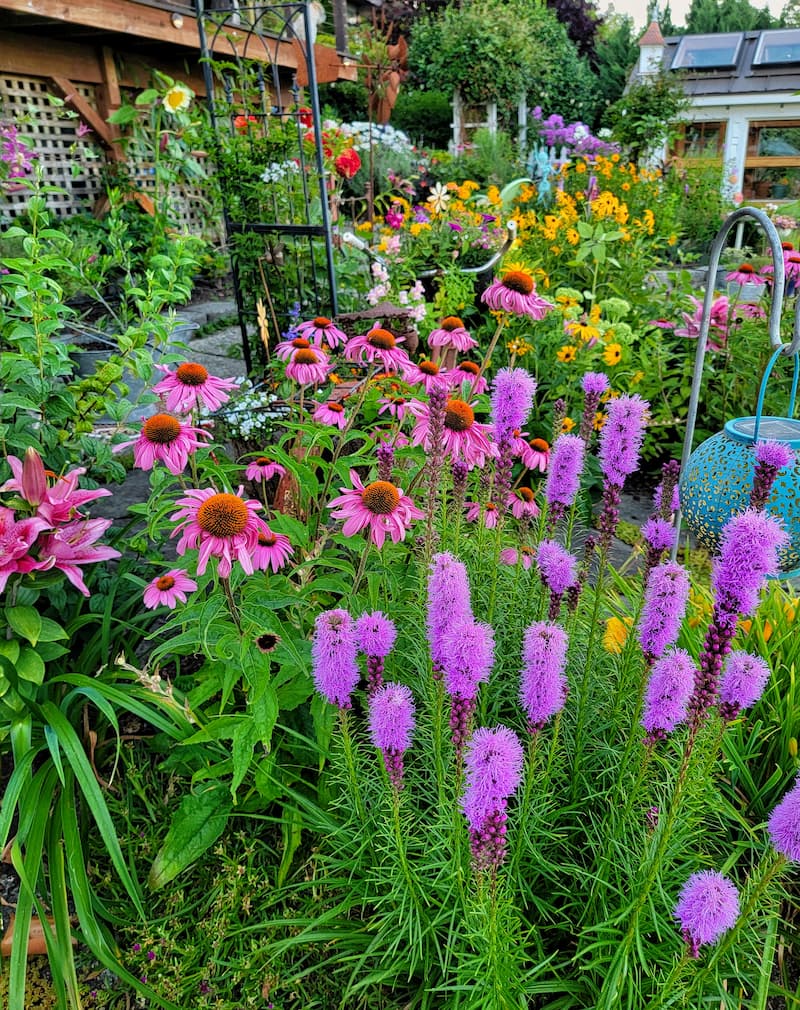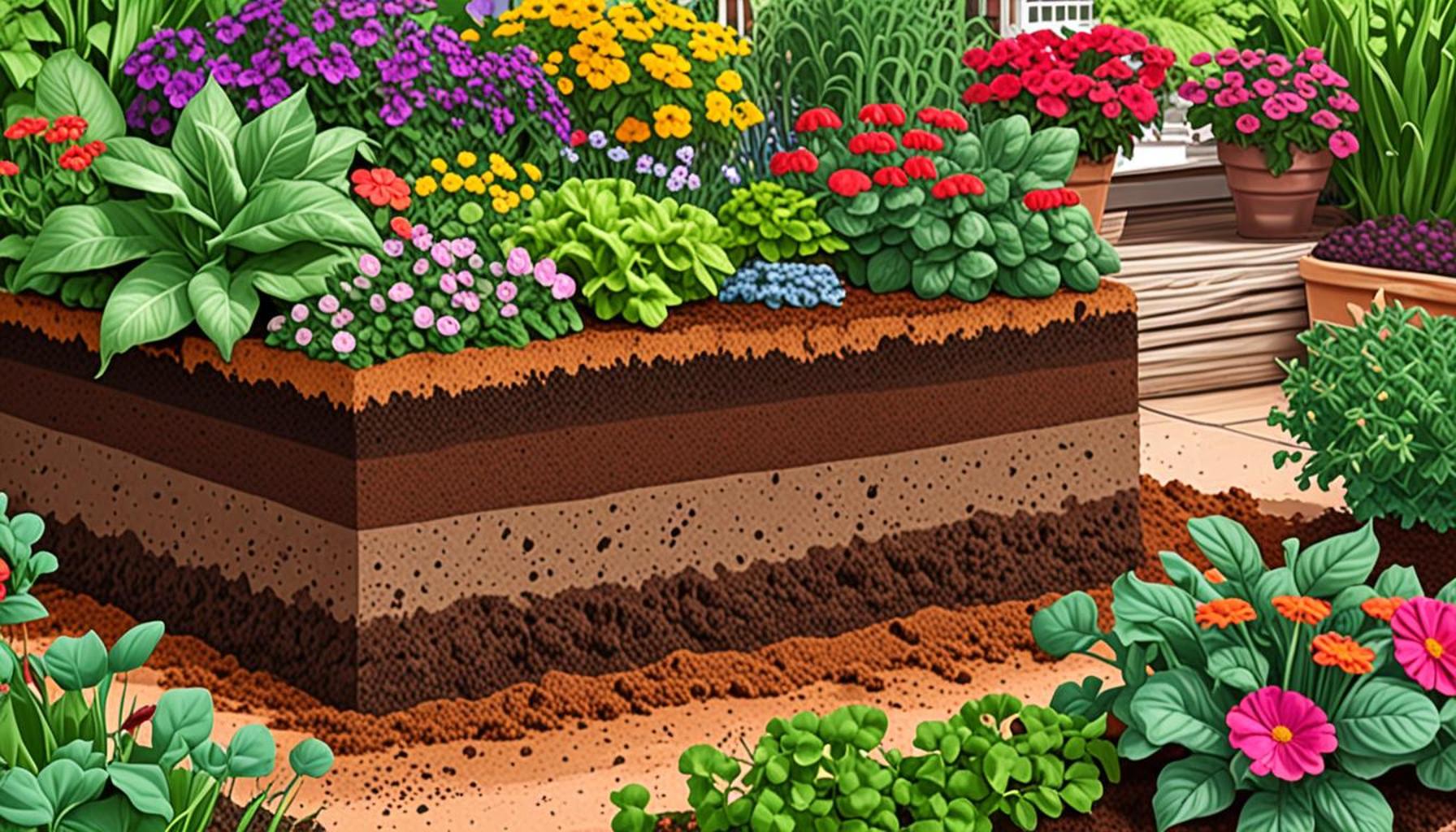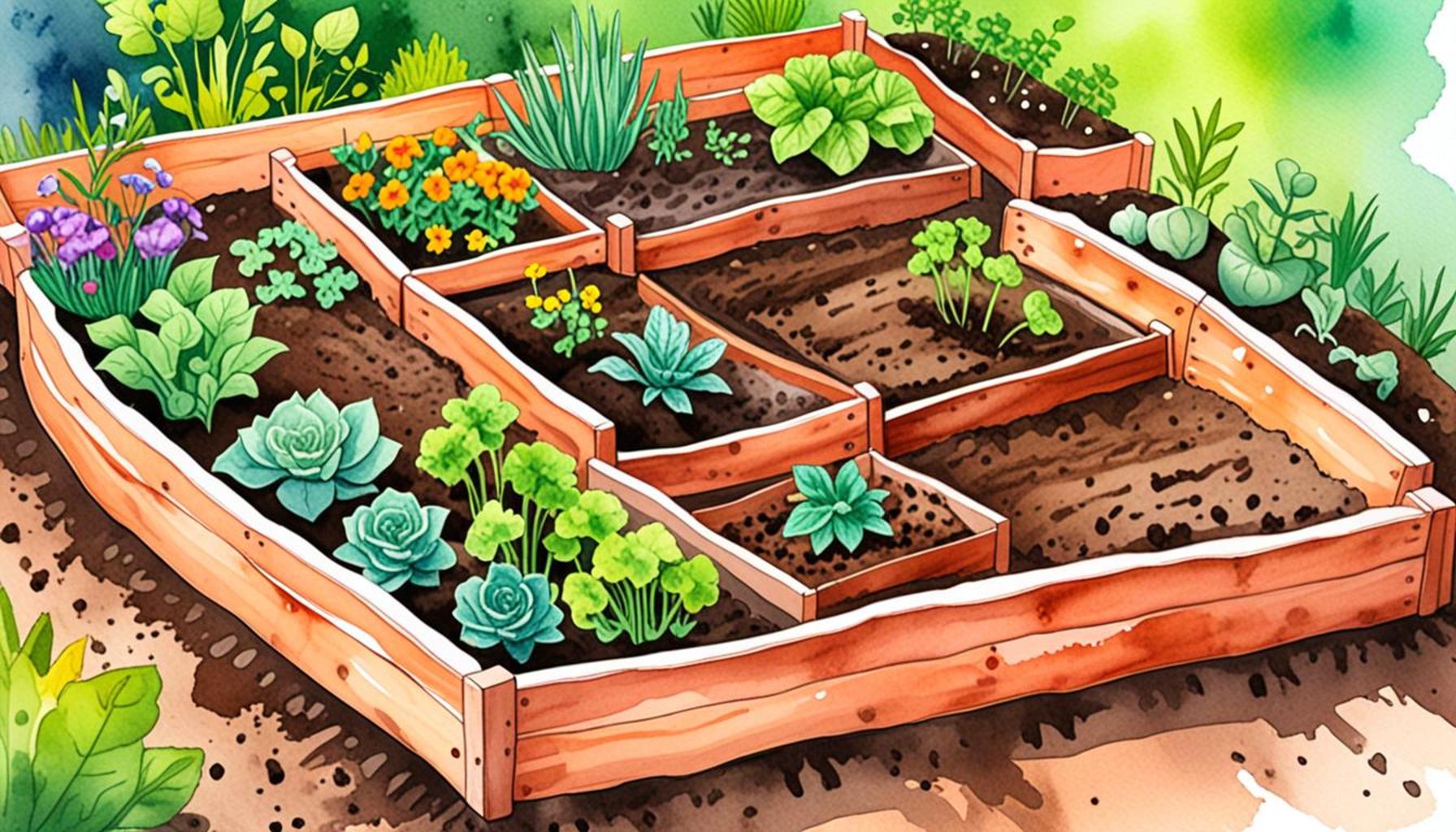Companion Planting and Soil Health: How to Prepare Your Soil for Diverse Crops

The Synergy of Plants and Soil in Sustainable Gardening
Imagine stepping into a garden bustling with life, where each plant not only offers beauty but also plays a significant role in supporting its neighbors. This thriving scene is a testament to the practice of companion planting, a method that enhances biodiversity and promotes ecological balance in your outdoor space. By understanding the complex interactions between different crops, gardeners can cultivate a productive ecosystem right in their backyards.
Why Focus on Soil Health?
The health of your soil is fundamentally linked to the success of your garden. Healthy soil serves as the foundation that directly affects plant vitality, leading to remarkable benefits such as:
- Stronger plants that possess a greater ability to fend off pests and diseases.
- Higher yields of various crops, allowing for a diverse harvest that can meet family needs.
- Better water retention and nutrient availability, creating a more resilient garden in the face of fluctuating weather patterns.
In the United States, as more gardeners opt for sustainable practices, the advantages of investing in soil health and implementing companion planting are becoming increasingly clear. For example, planting basil alongside tomatoes is well-known for enhancing flavor and also serves to deter pests such as aphids. Similarly, marigolds are celebrated for their ability to repel nematodes and attract beneficial pollinators such as bees and butterflies, making them an excellent addition to any garden bed.
Getting Started
Preparing your soil for a variety of crops is a crucial step that goes far beyond simply adding fertilizers. To create an optimal growing environment, consider these essential actions:

- Testing soil pH and nutrient levels to understand what amendments may be needed.
- Incorporating organic matter such as compost or well-rotted manure to improve soil structure and nutrient content.
- Implementing crop rotations and cover crops to prevent soil depletion and promote fertility.
Engaging in these practices not only optimizes soil health but also establishes a rich and interconnected garden ecosystem that thrives on mutual support. By exploring the art and science of companion planting and soil care, gardeners can unlock the true potential of their green spaces. Take the time to learn about the relationships between plants, and you may discover gardening methods that lead to stronger, better, and more sustainable crops.
DIVE DEEPER: Click here for expert tips on soil amendment!
Essential Steps to Elevate Your Soil for Companion Planting
As you dive into the world of companion planting, it becomes evident that the very first step lies in understanding and improving your soil. The foundation of any flourishing garden begins with soil rich in organic matter and nutrients. Before you plant, taking the time to prepare your soil can yield impressive results and support healthy relationships among your crops. Here are some key steps to consider:
- Conduct a Soil Test: Start by determining the pH level and nutrient composition of your soil. You can easily acquire a soil test kit from local garden centers or agricultural extensions. Most vegetables prefer a slightly acidic to neutral pH, ideally ranging from 6.0 to 7.0. By understanding your soil’s specific conditions, you can make informed amendments to create optimum growth conditions.
- Add Organic Matter: Enriching your soil with organic matter is crucial for improving its structure and nutrient holding capacity. Adding well-composted materials like kitchen scraps, grass clippings, or aged manure can create a vibrant ecosystem within the soil, feeding beneficial microorganisms that support plant health. A rich compost mix not only enhances soil fertility but also improves moisture retention, which is particularly beneficial during dry spells common in the U.S. gardening zones.
- Mind the Companions: When selecting plants for companion planting, consider their growth habits, nutrient needs, and pest control benefits. For example, kale and peas thrive together, as the nitrogen-fixing capabilities of peas enrich the soil for kale, which can deplete nitrogen levels itself. On the other hand, the classic pairing of carrots and onions not only maximizes space but also helps deter pests that target one another. Observing these natural harmonies enhances overall productivity.
- Implement Crop Rotation: Implementing a rotation schedule ensures that crops with similar nutrient requirements do not inhabit the same soil year after year, thus preventing nutrient depletion. Rotate your crops every season; for example, after a year of growing legumes, switch to brassicas. This practice not only invites diversity but also disrupts pest and disease cycles that can take hold more easily when similar crops are planted in succession.
With the right preparation, your soil can transform into a nurturing environment for diverse crops, leading to abundant harvests and healthy plants. This initial groundwork fosters the promising interplay between companion plants and soil health, setting the stage for vibrant garden ecosystems. By focusing on these practical steps, gardeners can pave the path to sustainable success, ensuring that each vegetable, herb, and flower flourishes together harmoniously.
| Benefits of Companion Planting | Impact on Soil Health |
|---|---|
| Increased Biodiversity | Promotes nutrient cycling as diverse plants enrich the soil microbiome. |
| Pest Control | Natural insect deterrents reduce reliance on chemical pesticides, maintaining soil integrity. |
| Efficient Nutrient Usage | Companion crops share nutrients, leading to enhanced growth and healthier soil structure. |
| Improved Crop Yields | Healthy soils support robust plant development, leading to larger and more abundant yields. |
The practice of companion planting not only enhances biodiversity but also directly influences soil health. Plants that thrive together can build a more resilient ecosystem by improving the soil’s nutrient content through their differing root structures. For instance, deep-rooted plants can draw up nutrients from the depths, making them available to shallower-rooted companions. Moreover, this activity encourages a vibrant community of beneficial microorganisms in the soil. Utilizing natural pest control methods through companion planting can also preserve the delicate balance of soil microorganisms. This reduces the need for synthetic pesticides, which can lead to harmful runoff and soil degradation. Furthermore, as diverse crops share nutrients and space, they tend to create a more robust soil structure that supports better water retention, ultimately leading to stronger and more productive plants. Exploring these intricate relationships can yield insights for every gardener or farmer looking to optimize their crops sustainably. By preparing the soil through companion planting, consumers and producers alike benefit from healthier environments and richer harvests.
DIVE DEEPER: Click here to enhance your gardening skills
Enhancing Soil Biodiversity for Sustainable Companion Planting
In cultivating a garden that thrives on companion planting, gardeners must extend their focus beyond mere soil preparation to nurturing soil biodiversity. A rich variety of organisms within the soil contributes significantly to the resilience and health of crops. Here are several methods to further enhance soil biodiversity and promote robust plant relationships:
- Incorporate Cover Crops: Utilizing cover crops like clover, vetch, or rye during the off-season can improve soil structure and increase organic matter. These crops act as living mulch, preventing soil erosion while also enriching the soil when turned under. Cover crops are particularly effective in the Midwest, where their nitrogen-fixing capabilities enhance the soil profile for subsequent planting seasons.
- Promote Soil Microorganisms: Beneficial microorganisms such as mycorrhizal fungi and various bacteria play an integral role in soil health. They assist in nutrient cycling and enhance nutrient availability to plants. By avoiding excessive tilling or chemical fertilizers, gardeners can promote a thriving microbial community. Some gardeners even introduce beneficial microbes by applying products that contain mycorrhizal fungi, further advancing companion planting benefits.
- Utilize Natural Mulches: Mulching enriches the soil as it breaks down, adding essential nutrients while suppressing weeds that compete for resources. Organic mulches like straw, wood chips, and biodegradable materials retain moisture and create a welcoming habitat for earthworms and other soil life. In regions prone to drought, this strategy is advantageous for maintaining the moisture levels necessary for companion plants to flourish.
- Expand Plant Diversity: Cultivating a range of plants not only promotes an inviting environment for beneficial insects and pollinators but also decreases the likelihood of pests establishing themselves. Integrating flowers like marigolds and nasturtiums amongst vegetables not only attracts pollinators but also helps deter harmful insects. Additionally, certain herbs like basil and chamomile create synergistic relationships with vegetables, enhancing flavor while promoting growth.
Further, as specific plants can improve soil health while simultaneously supporting growth, consider the use of nitrogen-rich legumes such as beans or peas. These crops not only enhance soil nutrients when turned into the ground at the end of their growing season but also attract beneficial insects when they blossom. Utilizing systems where crops play both a productive and restorative role can keep your garden flourishing sustainably.
As you cultivate these practices, remember that soil health is not a one-time endeavor but a continuous process of fostering an ecosystem. The interaction between companion plants and healthy soil creates a resilient garden that not only provides for your table but also promotes biodiversity. To further explore this fascinating world, consider resources such as local agricultural extensions or community gardening workshops, where you can connect with fellow enthusiasts eager to learn and share knowledge about companion planting and soil health.
By adopting these methodologies, you will create a nurturing environment that empowers each crop to reach its potential, ultimately enriching both your garden and the surrounding ecosystem.
DIVE DEEPER: Click here for expert tips
Conclusion: A Holistic Approach to Companion Planting and Soil Health
In the intricate tapestry of gardening, companion planting and soil health are interwoven threads that hold the promise of a thriving ecosystem. Understanding how to prepare your soil for diverse crops is essential not just for immediate yields, but for fostering the long-term vitality of your garden. By embracing the techniques outlined—from incorporating cover crops and promoting beneficial microorganisms to utilizing natural mulches and expanding plant diversity—you are laying the groundwork for a robust and resilient environment.
Consider that every action taken to enrich your soil contributes to an intricate web of life below the surface. Implementing biodiversity in your gardening practices not only enhances the nutritional profile of the plants but also creates an inviting habitat for vital insects and microorganisms. The continuous cycle of planting, nurturing, and harvesting allows the soil to regenerate, creating a sustainable loop that benefits both you and the environment.
As you cultivate these principles, let curiosity guide your journey. Explore local resources, engage with your community, and witness firsthand the remarkable relationships between plants and soil. Each step taken toward enhancing soil health paves the way for flourishing gardens that not only satisfy the table but also contribute to the greater ecological balance. The adventure is just beginning—dive into the world of companion planting and see how each choice transforms your soil into a thriving sanctuary for diverse crops.


